
Tools of The Trade: Tools Every Aspiring Robot Builder Should Have
Have you ever heard of the phrase “tools of the trade”? Every trade and hobby has tools specific to their craft and each have basic tools required to complete any job. The basic tools of a carpenter include a tape measure, framing hammer, and speed-square, for example.
Just like the carpenter, the robotics hobbyist and builder has his or her own tools of the trade. As one who intends to build robots, you should have some basic tools and items at your disposal, such as:
- Common Screwdrivers
- Specialty Screwdrivers
- Wire Cutters
- Tweezers
- Wire Strippers
- Multimeter
- Breadboard
- Helping Hands
- Solder Iron
By the end of this blog we will have gone over some basic tools and items an ambitious robot builder should have or may consider obtaining — broken down into 3 categories:
- Bare Bone Basics
- Basic Tools and Items You May Already Have at Home
- Tools and Items Every Aspiring Robot Builder Should Have
Tools of the Trade
Here, we’ll start with the very bare bone basics for the aspiring robot builder — then we’ll move on to basic tools and items that any enthusiast should have to make your time — designing, building, fixing and maintaining your robots easier and more enjoyable.
4 Bare Bone Basic “Tools”
I call the following items the bare bone basics. This is because they are what everyone should have and most likely already have on their desk or workbench — not just people doing robotics. The 4 bare bone basic “tools” are:
- A Writing Utensil: Specifically, a good pencil — better yet, even more specific — a Paper Mate Sharp Writer #2 mechanical pencil. These writing utensils are cream-of-the-crop on any builder’s workbench — on a budget! They’re perfect for jotting down notes, brainstorming ideas, and drawing designs. Every builder has their favorite writing utensil and the Paper Mater Sharp Writer is many creative people’s go to pencil — including my own personal favorite! The following is my own objective review of why I like to use them:
| Ergonomics | Key Features | Price |
| Comfortable mechanical pencil to use. Round – no hard edges on the body of the pencil. | No frills – just a basic #2 pencil that feels good when writing and it writes well – also has a good eraser that erases clean. | Inexpensive – especially when bought in bulk. |
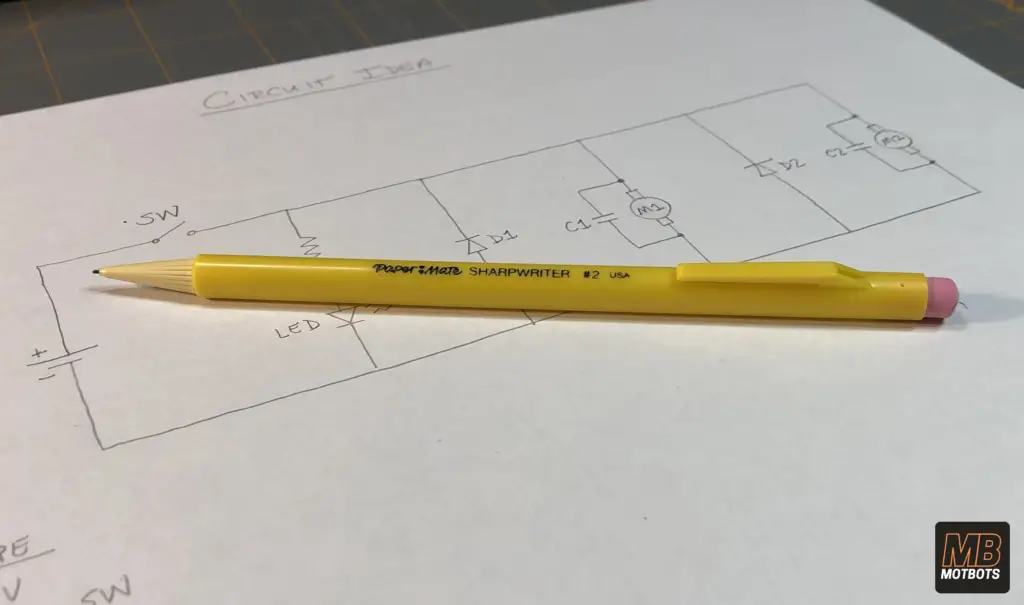
- Notebook: Call me old fashion — I like the idea of having a good notebook, and your writing utensil — maybe some highlighters and page tabs to have around to make notes on things as you progress in your knowledge and skills. It’s hard to remember everything you need, learn, or imagine — and having everything written right there in front of you takes the stress off of you trying to remember it all. It doesn’t matter what brand you get, but the college ruled spiral bound Mead notebooks are well established and are good notebooks. Notebooks are great for:
- writing down key concepts and lingo you learn,
- writing things down you find difficult to memorize,
- making note of new things you may want to learn more of,
- thoroughly understanding concepts written in a way that you can understand,
- creating a schedule for yourself on when you’re going to study or work on projects,
- writing down your ideas for your own projects,
- drawing simple sketches and diagrams,
- writing lists of items and components you need for projects.
- The list literally goes on…
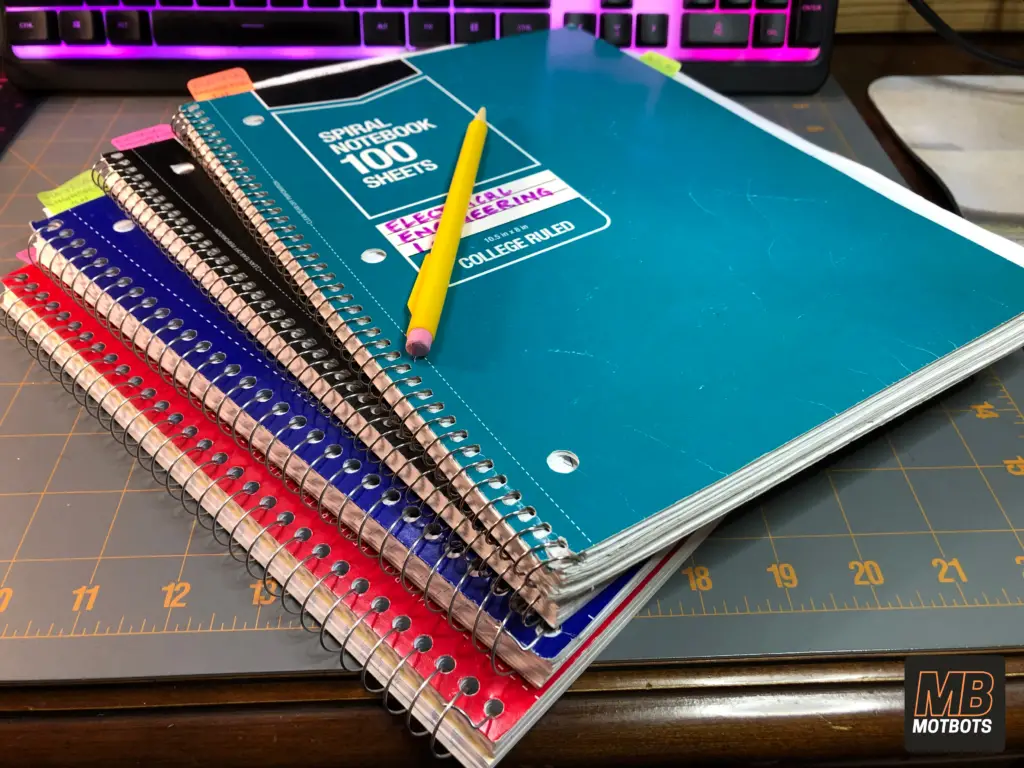
- Desktop Computer or Laptop: Having a computer on-hand at your workstation is crucial for the robotics builder. I still use my wife’s old HP laptop — with missing keys and all — to use programming software, store component data-sheets, browse the internet, and even use CAD software on it. I just ditched the old operating system on it and installed Linux Mint and it still works great for my needs! You don’t need to buy a new top-of-the-line computer to build robots — especially when you’re just starting out. Get a used one you can trust from a place like eBay — if you can! A lot of times you’ll need a computer to:
- look up component information and datasheets,
- search how-to content,
- search for new parts and components you may need,
- create circuit schematics from downloaded software tools,
- and to communicate through forums to ask questions or gather information.
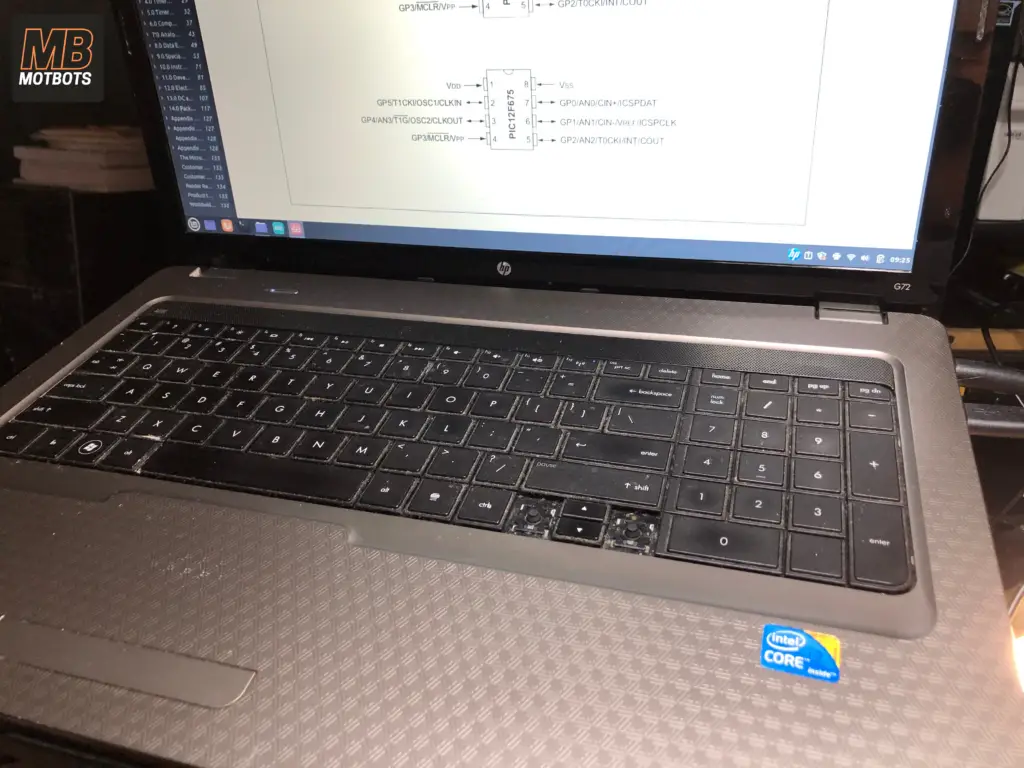
- Printer: A printer serves the purpose of being able to print off things you need, such as:
- schematics and datasheets of components you’re working with,
- project concepts and ideas,
- templates for cutting out material,
- and learning material, for example.
I use a Canon Pixma TS3522 printer that I bought on sale a year or two ago because my old HP printer petered out on me. I hated my old HP printer — mostly because the ink was so expensive and it seemed to make itself think it was low on ink all the time — even though it wasn’t — and it wouldn’t let you use the leftover ink anymore. I could literally jiggle the ink cartridges and still hear 30% of ink left in there — I swear! What a gyp!
My Pixima is OK — I like it and I haven’t had an issue with it. Its ink is much cheaper — though I feel like it runs out quickly on me, but I do print a lot and I can force it to keep printing until you can’t tell what’s printing anymore — unlike my old HP printer.
| Likes | Dislikes | Price |
| ○ Low cost. ○ Doesn’t skimp out on letting me use all the ink in the ink cartridges. ○ Affordable ink cartridges. ○ Good quality prints for basic printouts. ○ Mobile printing. | ○ Ink seems to run out quickly. ○ Sometimes takes or grabs more than one sheet of paper when printing. ○ Printer can be finicky about double-sided prints sometimes. ○ Prints a little slow for liking, but it’s not that bad. | Very affordable |
Canon Pixma TS3522 Printer
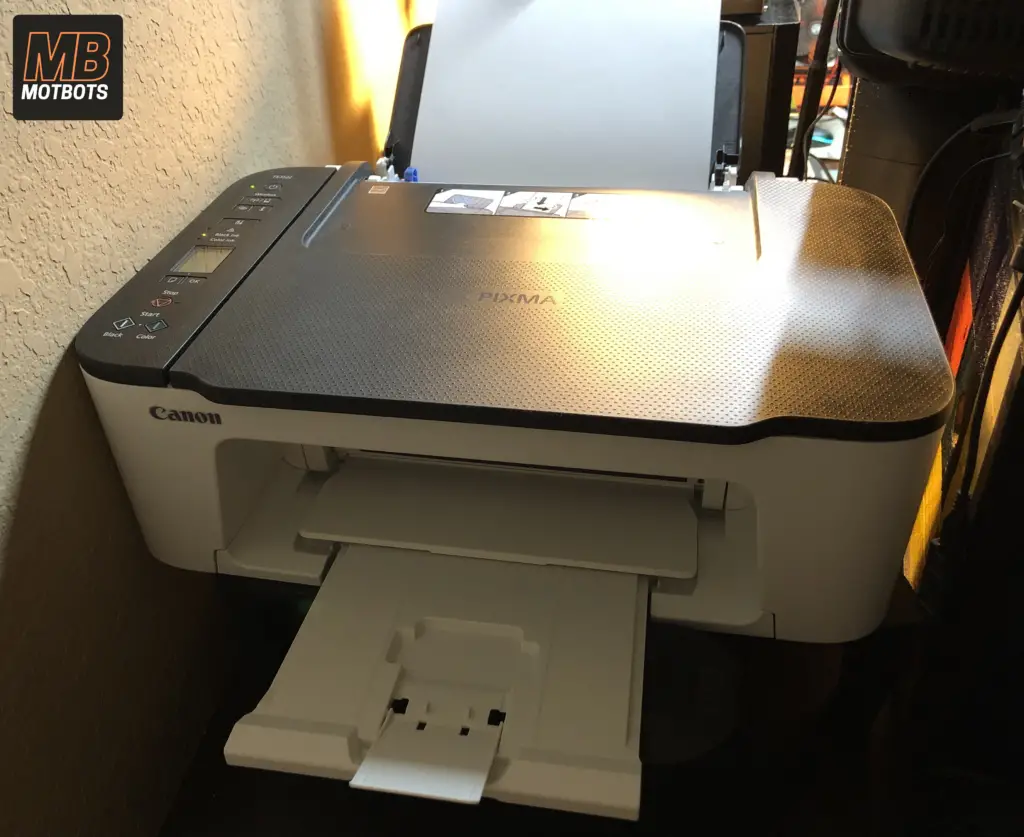
9 Basic Tools and Items You May Already Have at Home
Let’s move on to the tools and items you may already have around your home. In this list, I think of myself when I was first starting out in electronics and robotics as a hobby. I had the basics and made-do with what I had to make things work. These basic tools and items are what you will use on a regular basis and each serves its own purpose.
- Screwdriver Set: A good screwdriver set is one of the most important tools to have around your workstation. You need to have the basics, such as Phillips heads and flat heads of different sizes.
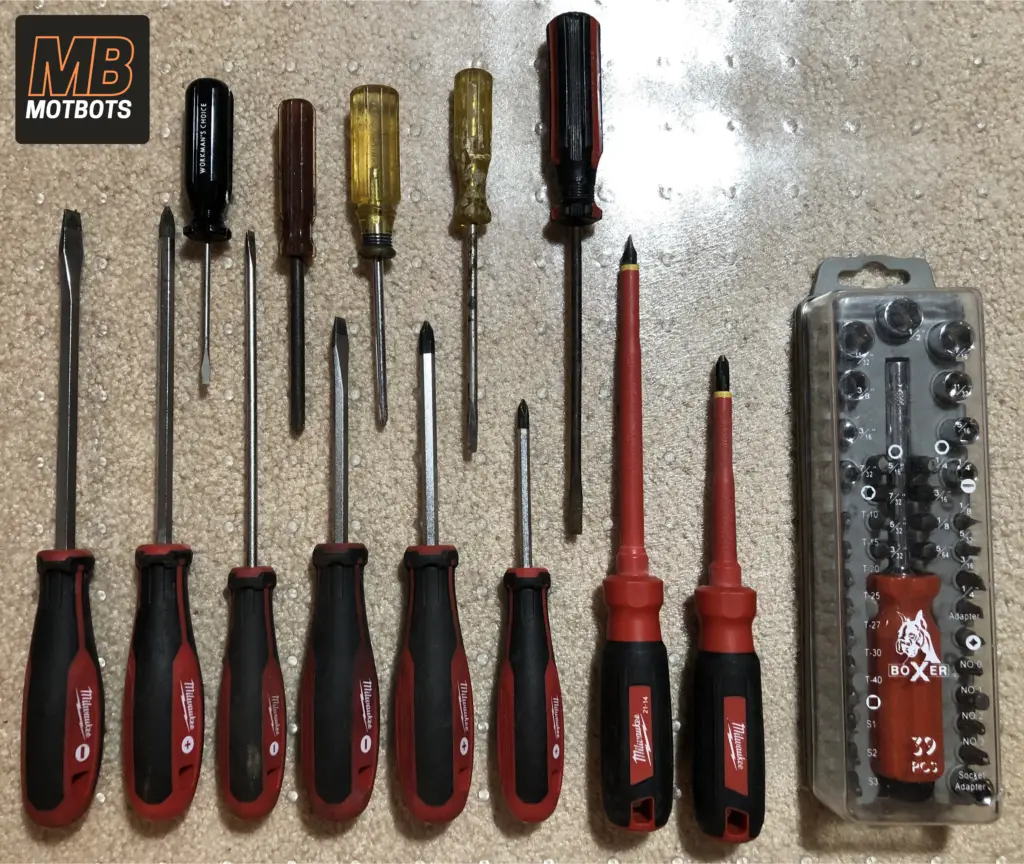
- Wire Cutters: When working on electronics and robotics projects, you will inevitably be working with wires – and often! You’ll need to cut lengths of wire or remove wire from items you hack – and having a good pair of wire cutters will make work easy for you when having to cut wire, especially a bunch of it for big projects.
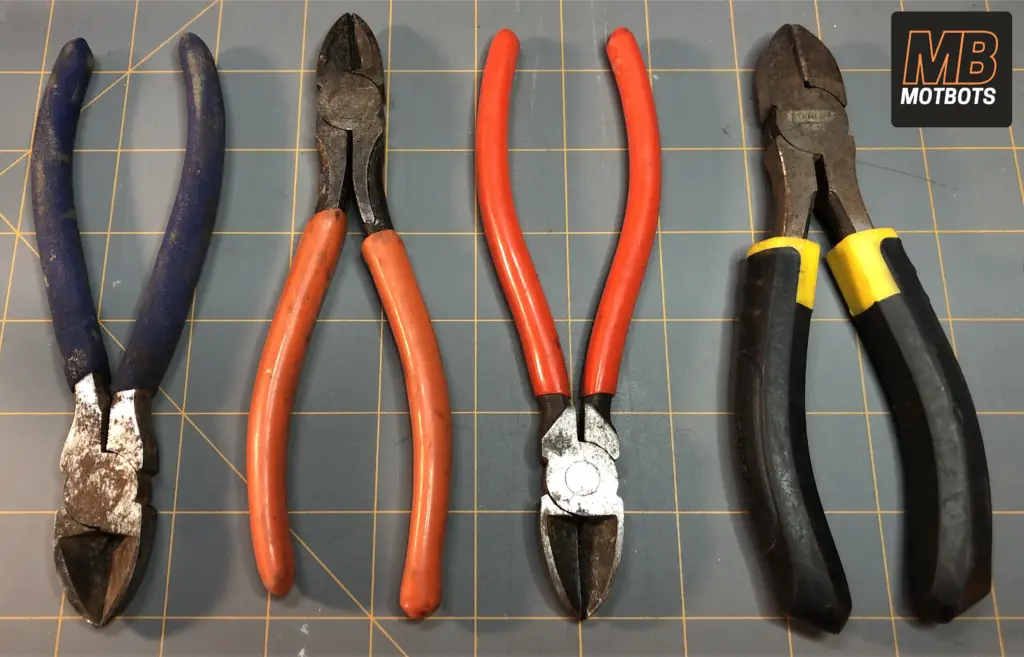
- Sharp Knife or Cutting Blade: When I started in electronics, I used my pocket knife to remove wire sheathing to expose wire ends to be able to connect them to components or to perf boards. It was sloppy work at first and it took a lot of practice to get good and efficient with it. I would recommend using a pocket knife or some other sharp knife or blade – like an X-Acto knife to begin with before buying a good pair of wire strippers. The reason is two-fold:
- It builds character, patience, and fine-hand-motor skills that you will appreciate later as you gain more experience.
- Most people already have a pocket knife or X-Acto knife somewhere in their home — this saves you the cost of purchasing a new tool, like a wire stripper.
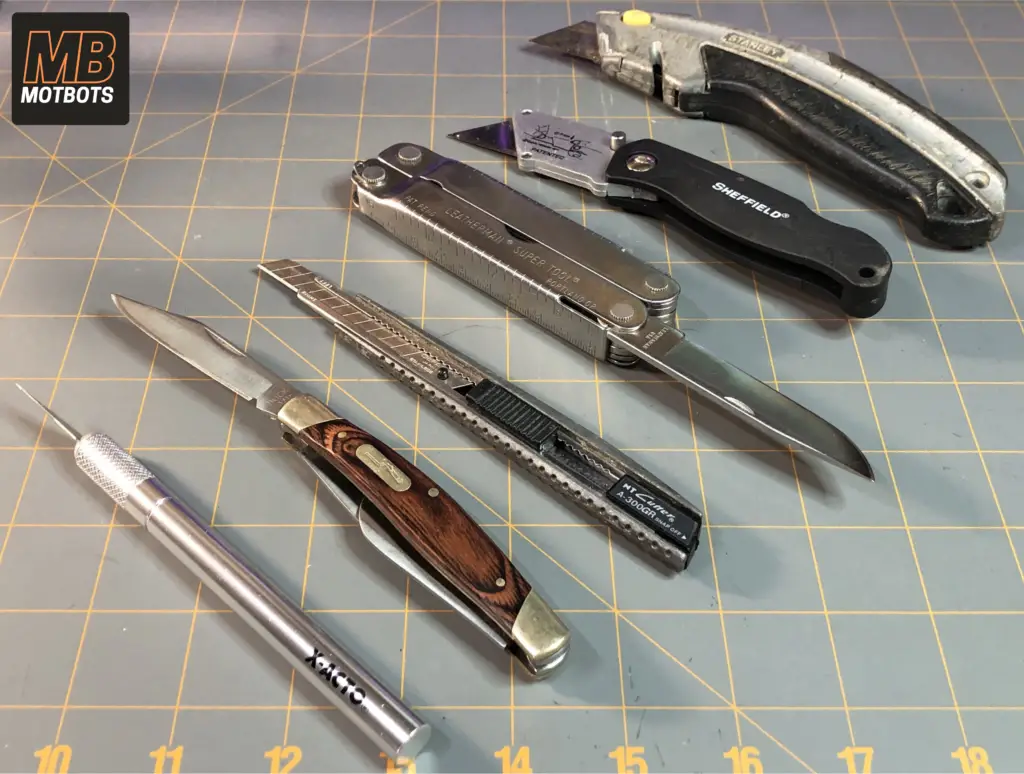
- Tweezers: Tweezers are one of those tools that you think you don’t need, but wish you had one handy when you get into a situation where you do need one. Tweezers are so awesome for picking up small items like jumper wires for breadboards, picking up resistors in your miscellaneous components box or removing an IC chip or microcontroller from a breadboard. I literally use one every time I’m doing an electronics project. Go find one from your mom’s, sister’s, or wife’s drawer. Don’t tell them I told you to though!
- Solder Iron or Solder Gun: Solder irons or solder guns in particular are a pretty common tool people have for projects or to fix things around the house, but the solder iron is an important tool to have if you’re going to get into deeper, more permanent electronics projects. If you don’t have one, you can get one fairly cheap. I started out with a basic Hakko Red 60W solder iron for around $10 or so — I believe from Fry’s Electronics back-in-the-day, that had no temperature adjustment capabilities and I used it for years — still got it too!
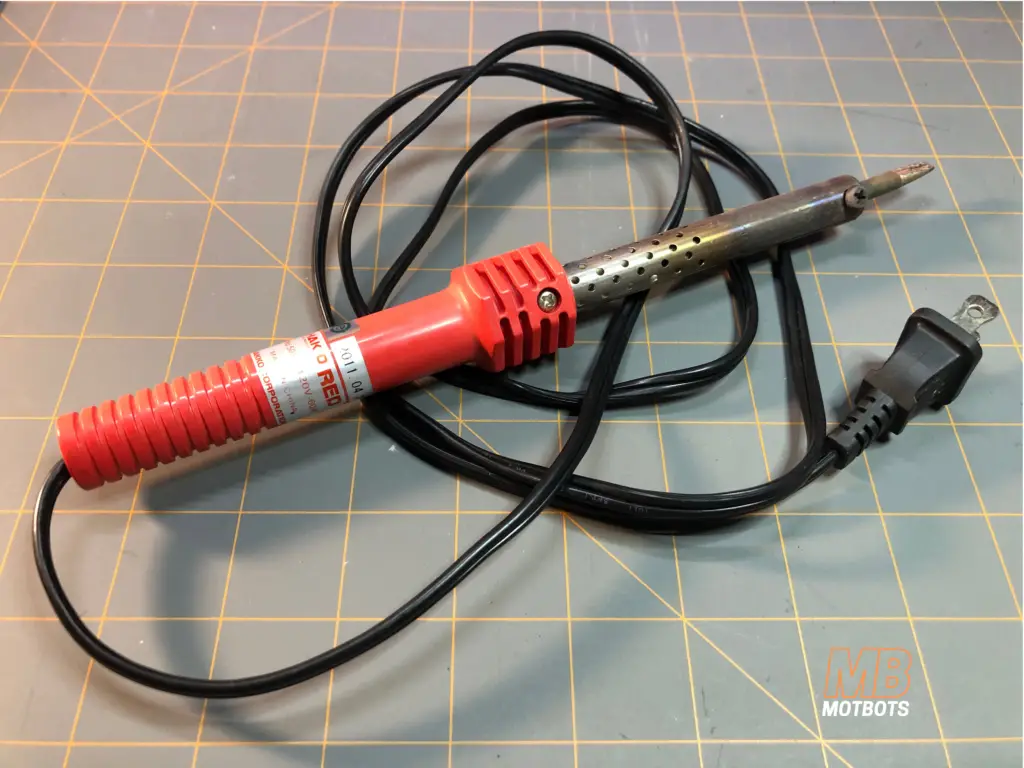
- Dish Sponge: Dish sponge? Yes — I used old dish sponges for years to clean my solder iron tips. I would run a tiny amount of water on an old dish sponge in the sink to get them a little damp and put it in a small bowl to keep it from getting my work table wet. When I needed to clean my solder iron tip, I’d pick it up —run the tip of it a few times over the sponge and it’d be clean — good as new! I actually prefer an old dish sponge over a brass wire sponge tip cleaner — it may not be good for solder iron tips, but I never had any issues using one.
- Toolbox: If you’re like me, you might have a half-dozen or so of these — a true sign of a maker — or a bad sign of a hoarder! A toolbox is a great way to start keeping your tools organized, in a place where you know you can keep them safe and find them when you need them. A toolbox can come in many forms, such as a typical toolbox, a mechanic’s tool chest, or even a large fishing tackle box.
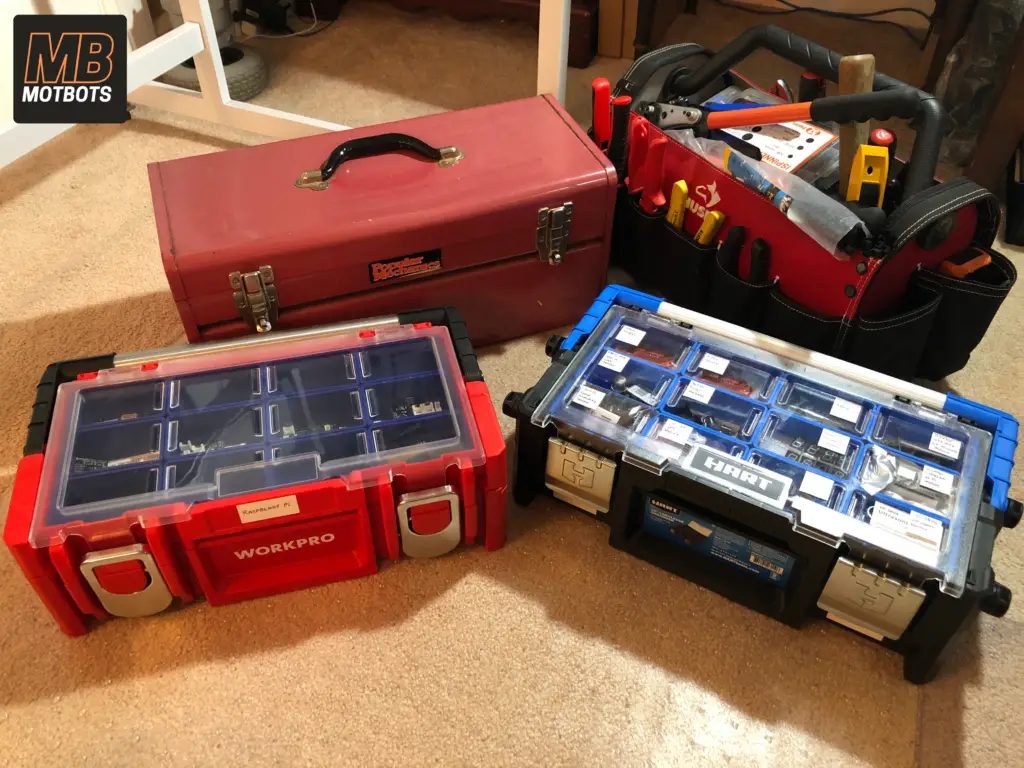
- Cardboard Boxes: Ah, the ole’ cardboard box — a Swiss Army Knife of containment — a “tool” I often use to store things away I don’t want to look at for another 3 years, forget what’s in it and not cross out what I wrote of what used to be stored in it — just to confuse myself later. In all seriousness though, I do use cardboard boxes to store electronic components and robot parts — especially new stuff of a project I’m working on that I don’t want sprawled out everywhere. Cardboard boxes are easy, temporary storage.
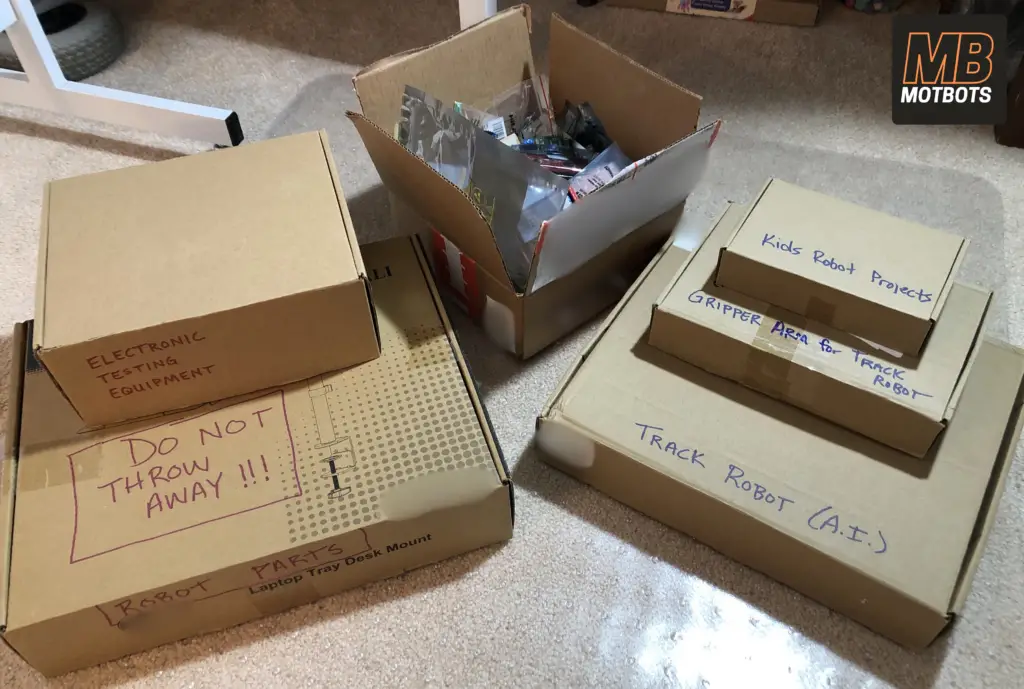
- Good Lighting: Having good lighting at your workstation is a must! It is no fun trying to work on something in a poor lit area, especially with small components — trying to figure out what you’re doing or where something is. Case in point — resistors are small components with small color bands on them that allow you to read what their value is in Ohm’s (Ω). I can’t tell you how many times when I’ve tried to determine what color the bands were on a resistor and having to go run to a light source to see it. Same goes for trying to read stuff too! So, having a good light or two — or more is very important — and it makes your work environment more enjoyable! I highly recommend good lighting for your space. I really like my desk clamp magnifying glass with lamp light here.
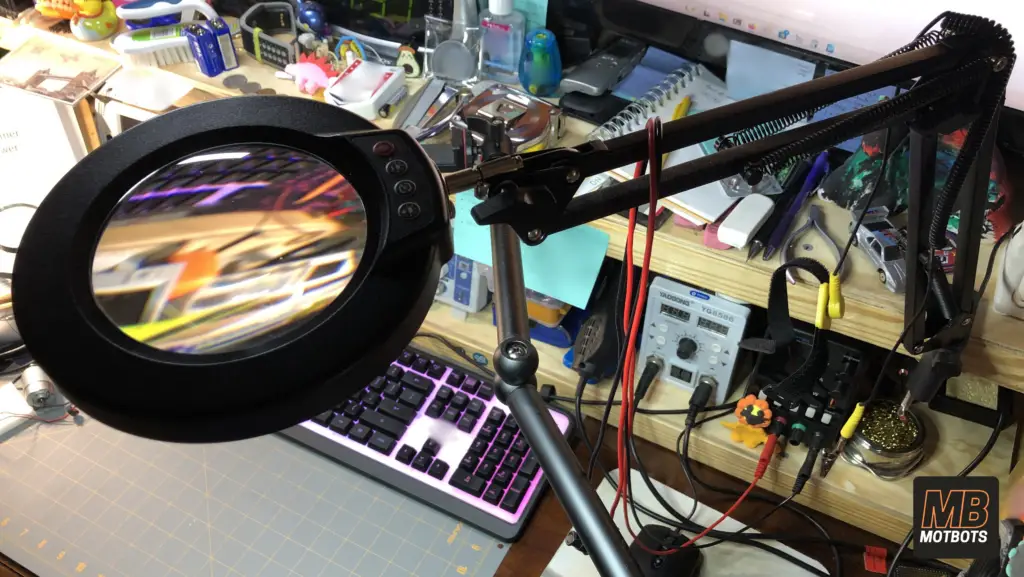
12 Tools and Items Every Aspiring Robot Builder Should Have
Now, we’ll discuss the tools and items every aspiring robot builder should have. The following list of tools and items are considered things that may not be as common to already have around your home, but things you may need to purchase if you feel that you’ve reached a point in your electronics and robotics activities to feel the need to do so.
- Specialty Screwdrivers: Some specialty drivers like hex heads, star, and square heads — as well as spanner, torx, and security heads would be of benefit too — because you will eventually come in contact with one of these types of screw heads and you’ll thank yourself later for having gotten these specialty drivers.
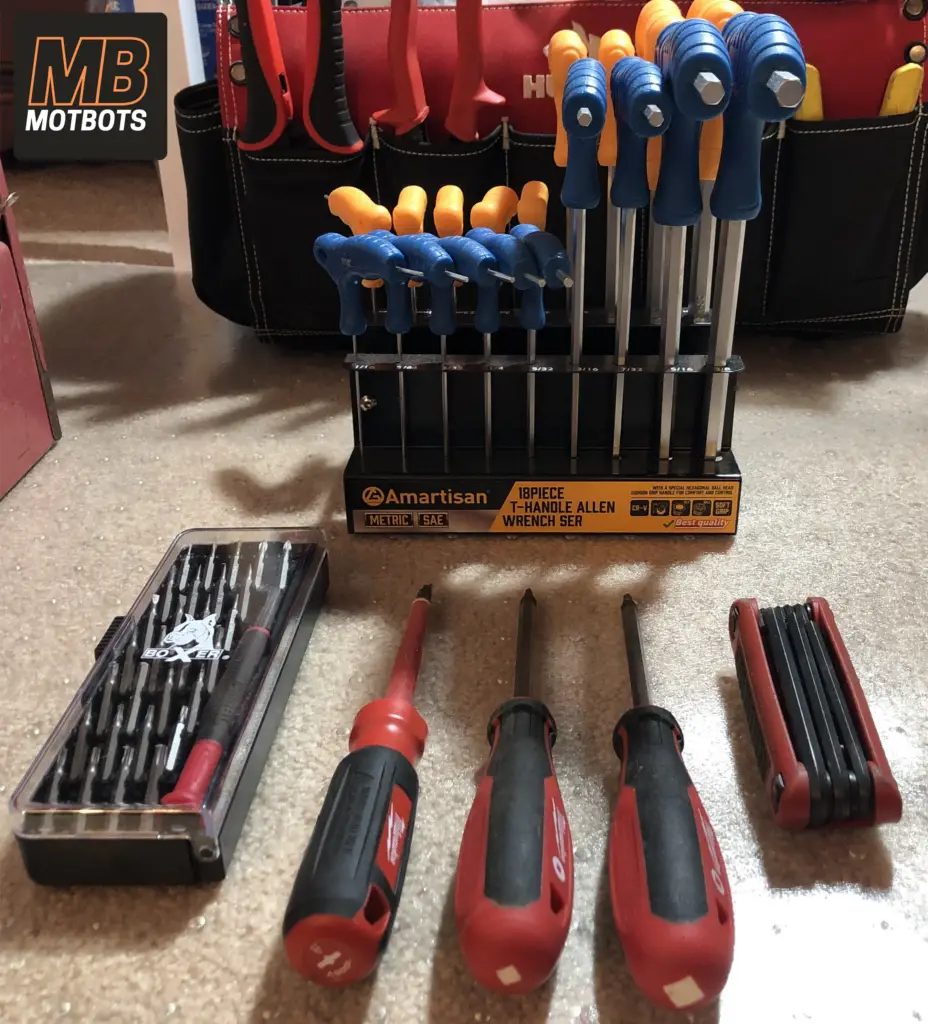
- Electronics Precision Screwdriver Set: These types of screwdrivers are small and precise. They are for smaller electronic devices that have smaller precision screws that a common screw driver wouldn’t be appropriate for. Personally, I use these types of screwdrivers more than common screwdrivers when it comes to disassembling or reassembling electronic devices, as well as for things like robotics project kits that you assemble yourself.
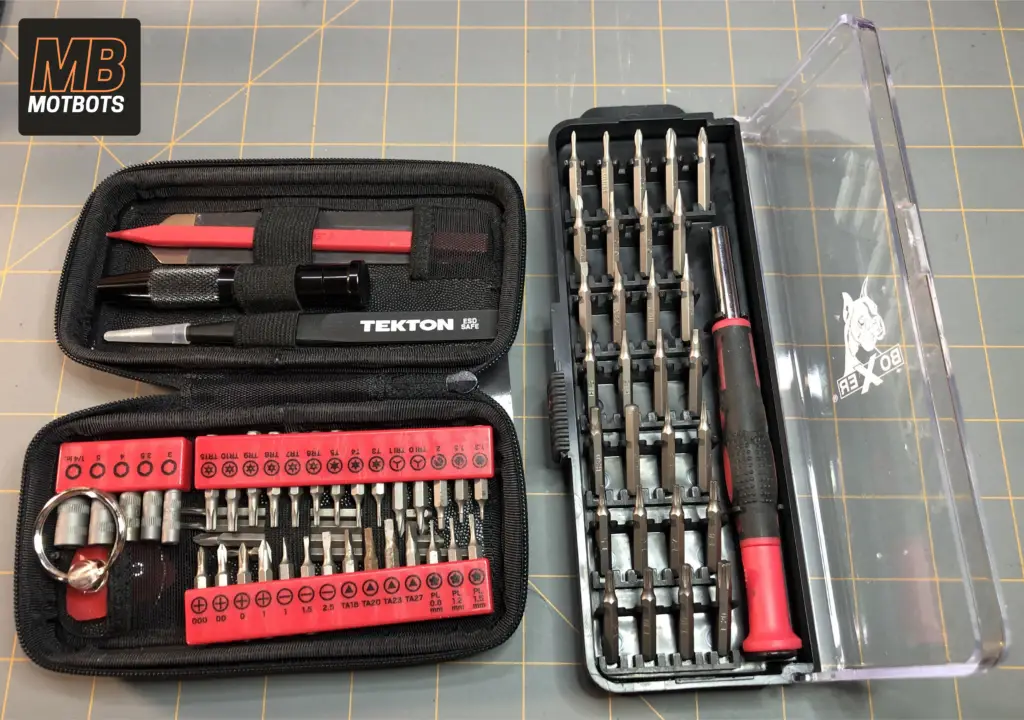
- Breadboard: The breadboard is something that I use all the time. Breadboards help you to quickly assemble through-hole components temporarily into working circuits. They’re great to use as a tool to understand circuits — letting you move and adjust components easily and quickly to setup just about any circuit you desire without soldering. If you’d like, you can check out our post on Breadboard Basics to learn more about them and how to use them.
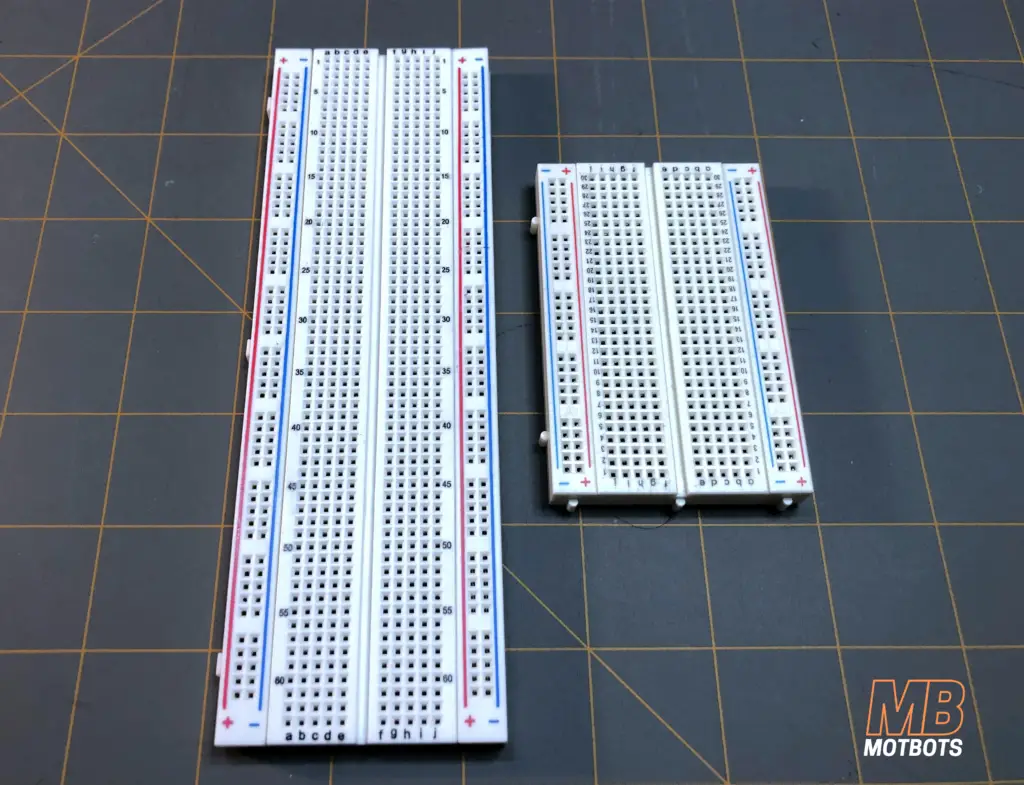
- Solder Iron Station: A solder iron station is a device designed for soldering electronic components that has solder iron temperature controls and other accessories. Most solder iron stations have solder iron holders and tip cleaners, as well as a rework gun or heating gun to use for things like heat-shrink tubing. Like anything, you can get cheap stations or expensive ones. I currently use the Yaogong YG8586 solder iron station. It’s pretty basic with temperature control settings for both the solder iron and heat gun, and air control for the heat gun, as well. I like it and have had no problems with it — and I got it at an affordable price. My favorite things about it is that the heat gun turns off automatically when you set it back in its holder — and that it not only has the ON/OFF controls for both the solder iron and the heat gun, but that it also has a mains power ON/OFF switch in the back of its case for added safety. I couldn’t find one anywhere to share with you except this one that’s similar to mine.
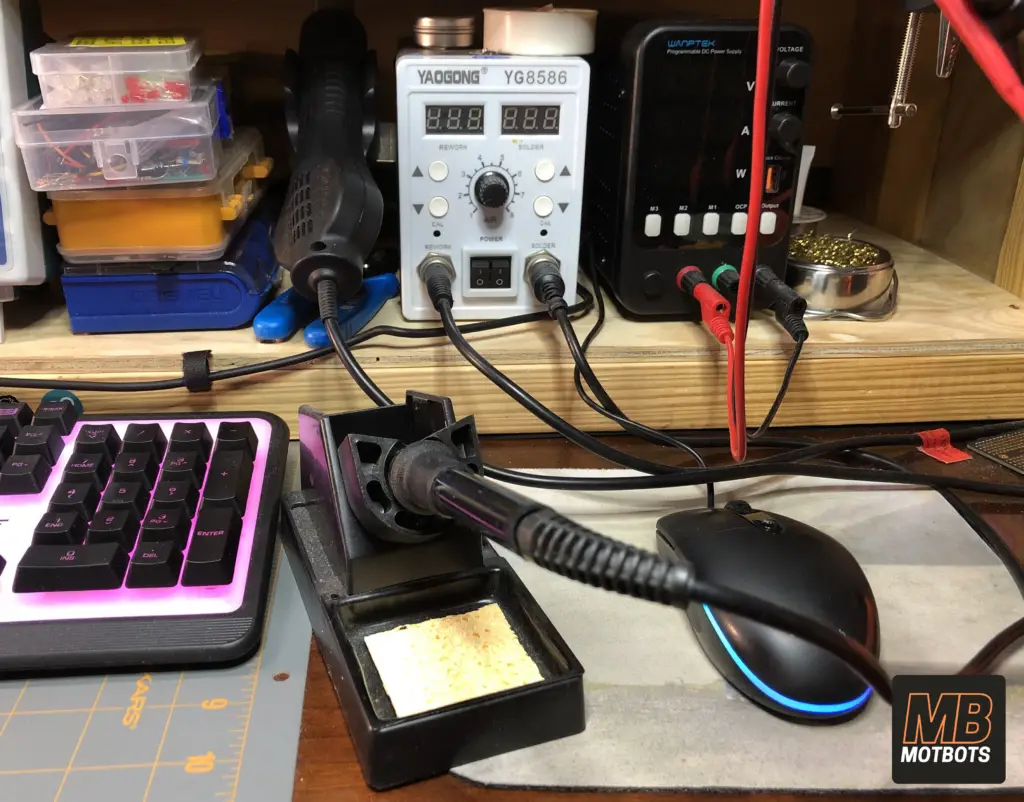
- Brass Sponge Solder Iron Tip Cleaner: I mentioned in the “9 Basic Tools and Items You May Already Have at Home” list above about using an old dish sponge to clean solder iron tips. If you took that route — as I did for years — you’ll eventually want to do away with using the dish sponge and get a brass sponge tip cleaner. I feel like these brass sponge tip cleaners don’t clean as well and as fast as the old dish sponge does, but the dish sponge can get messy — and you always need to get it wet. The dish sponge can just be a pain sometimes. A solder iron tip cleaner is less messy, easier to use, and looks better around your workstation too than an old dish sponge. I use a Aoyue brass sponge tip cleaner and I like the design and feel of the metal holder. Mine has a foam, no-slip pad on the bottom.
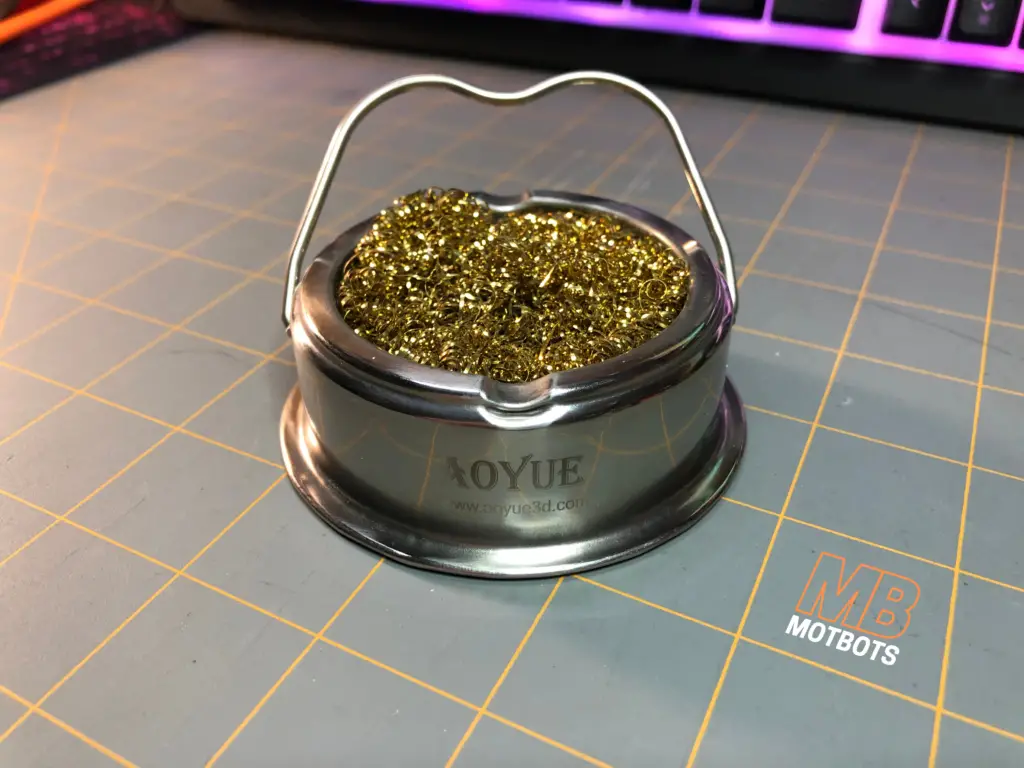
- Helping Hands: If you’re like me, you have two hands — but sometimes wish you had some spare hands to hold things while you work on them. Before I got my own set of helping hands years ago, I’d struggle all the time trying to solder components on PCB boards for projects. I’d basically be chasing around the whole work piece with my solder iron tip because when I’d tried to solder something I’d just be pushing everything around — nothing would stay in place. It was SO ANNOYING! Helping hands help keep what you’re working on secure and in place to allow you to solder your stuff more easily — it probably should be #1 on this list or close to. I use a Weller helping hands with magnifying glass and use it all the time.
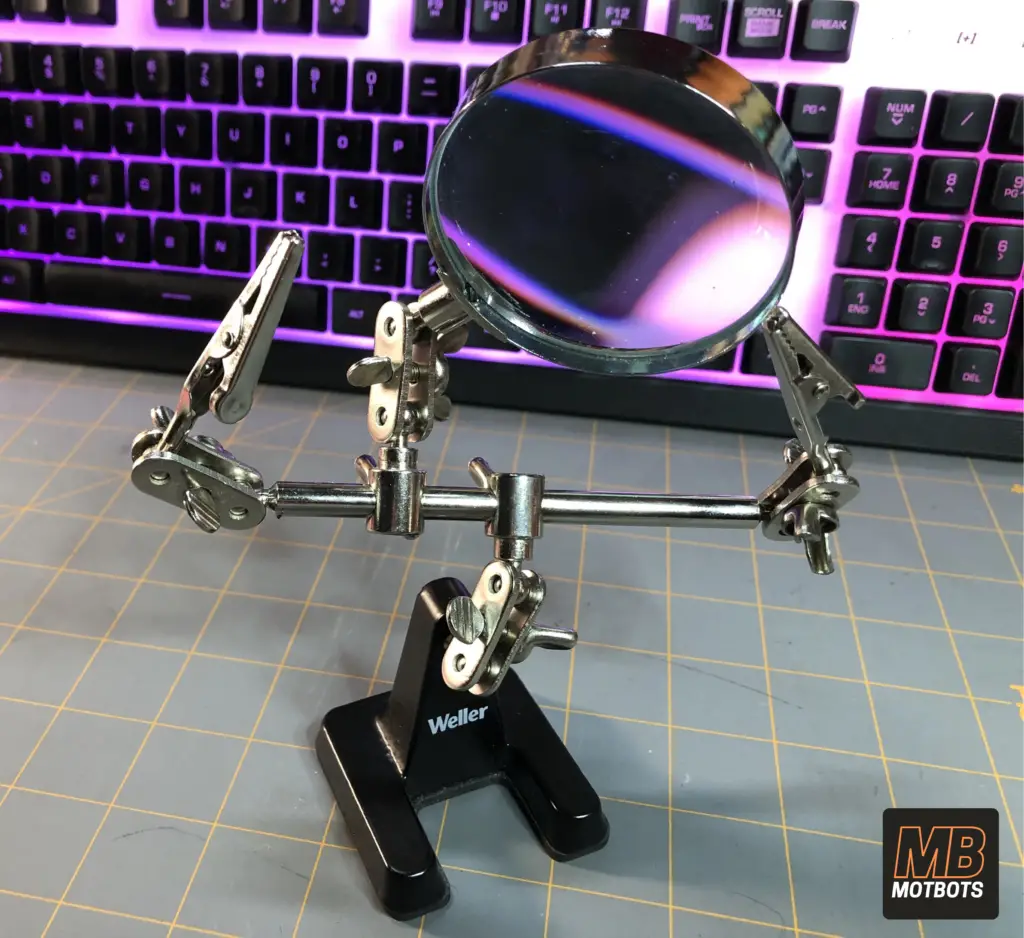
- Tweezers Set: I mentioned in the “9 Basic Tools and Items You May Already Have at Home” list above about having tweezers to use for picking up small things — but at some point you’ve got to give your mom’s, sister’s, or wife’s eyebrow plucking device back. Tweezers are another item I use all the time — they’re really convenient to have around. I use a great set of tweezers that came in several different shapes for different uses. I don’t know what brand mine are, but they are very similar to this brand here.
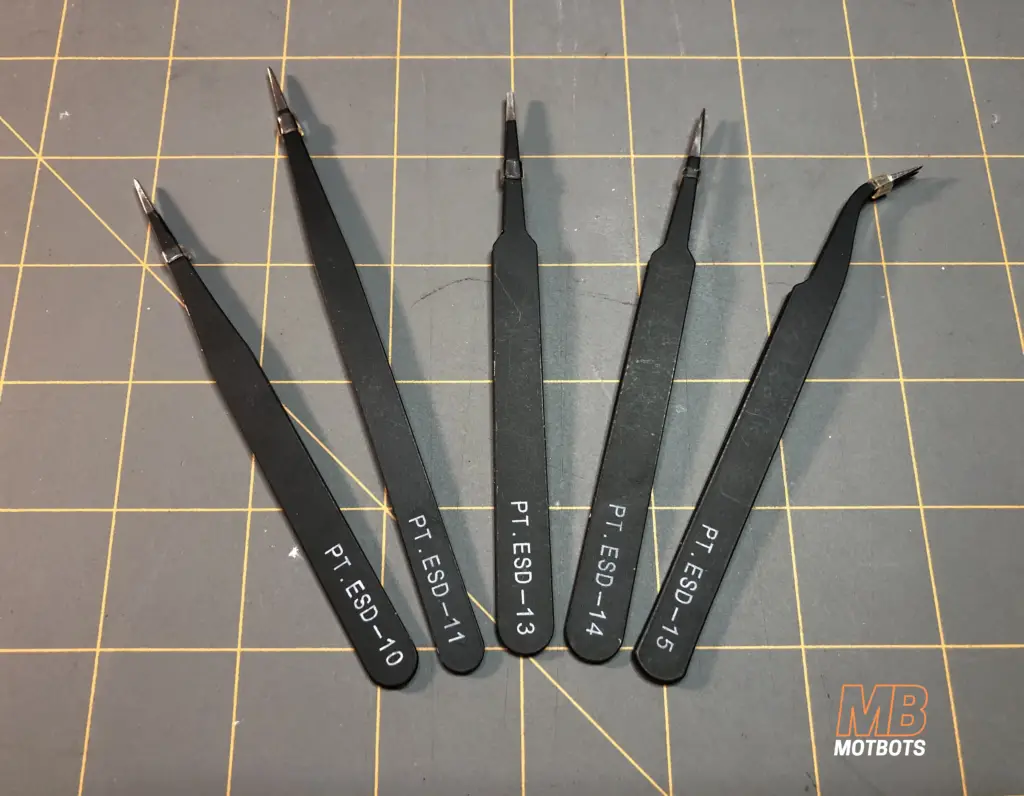
- Microcutter: A microcutter is another great tool to have at your workstation. Before I bought my first microcutter, I was using regular wire cutters to snip off through-hole component terminals from PCB boards. The wire cutters were just not the right tool for using on small things. Using microcutters for tasks like cutting off through-hole terminals on PCB boards is night-and-day compared to using wire cutters — they do quick work, clean work, and they’re not as cumbersome to use like wire cutters are for use on smaller items. I use the ENGINEER NS-04 Micro Nippers and I really like the look and feel of them. They are a little pricey compared to most, but the quality of them are very good.
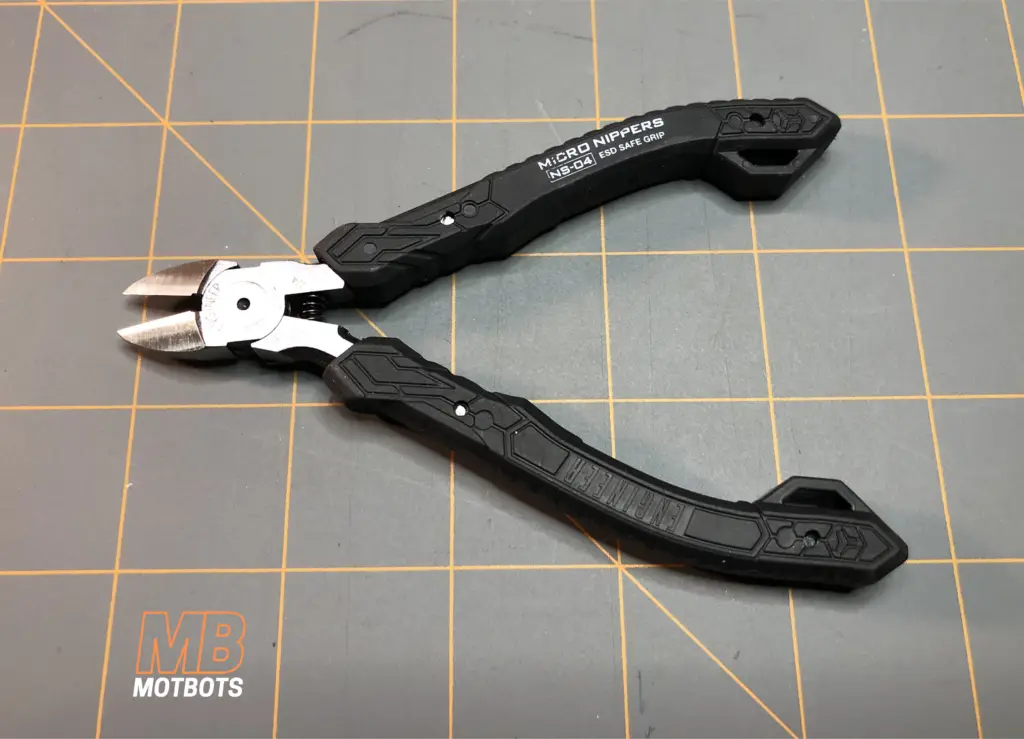
- Wire Stripper: I mentioned in the “9 Basic Tools and Items You May Already Have at Home” list above about using a sharp blade or knife to strip wires when you’re first starting out — but eventually you’ll want another easier, quicker way to do the job of stripping wires. A wire stripper is a tool that allows you to do just that. Some wire strippers often have built-in wire cutters and a wire connector crimping tool — just make sure that when you get one that it states that it has those features, if those are other features you want in your wire stripping tool. I own a Klein Tools wire stripper and it’s been a great little tool to have that I keep in my electrical tool bag. I couldn’t find the TU-5023 anywhere that I use all the time, but this one is similar to it.
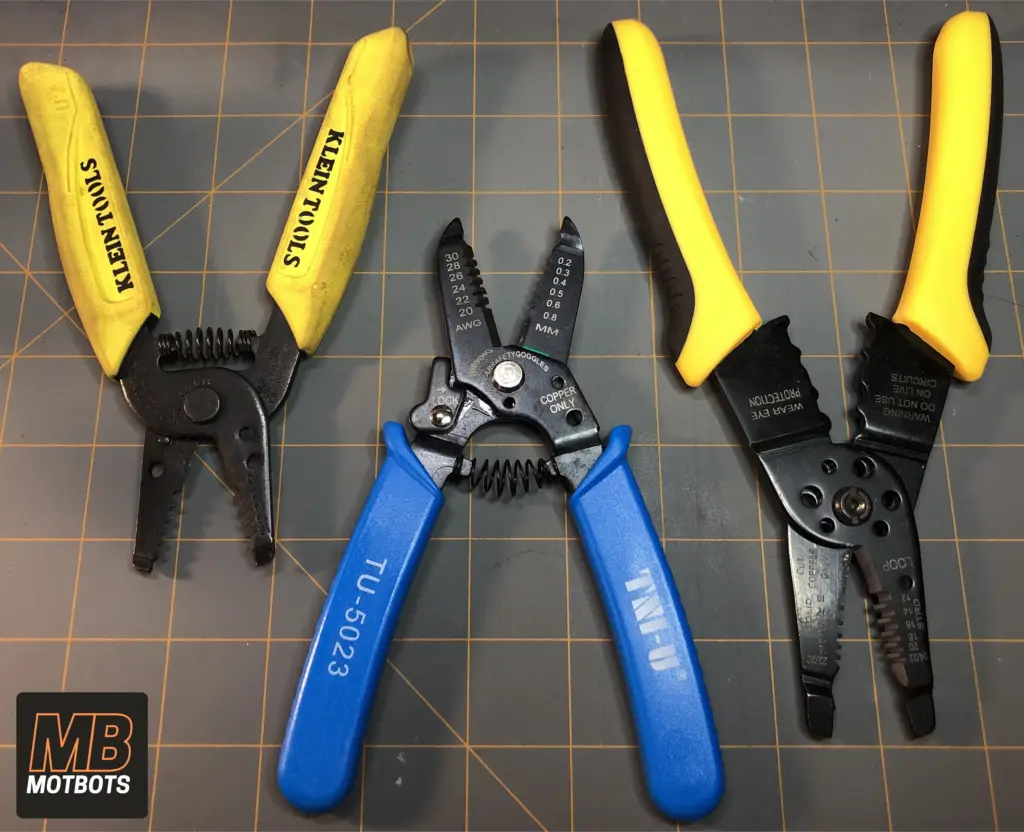
- Component Storage: Component storage is an important item to have. You want to be able to neatly store your electronic components and robot parts away. Having component storage makes putting things away easier, storage easier, your workspace cleaner, and keep your stuff more organized. I like my storage containers like my double-sided component box or especially my component organizer that allows me to remove the inner compartments to be able to keep next to me on my desk without having the whole box taking up space.
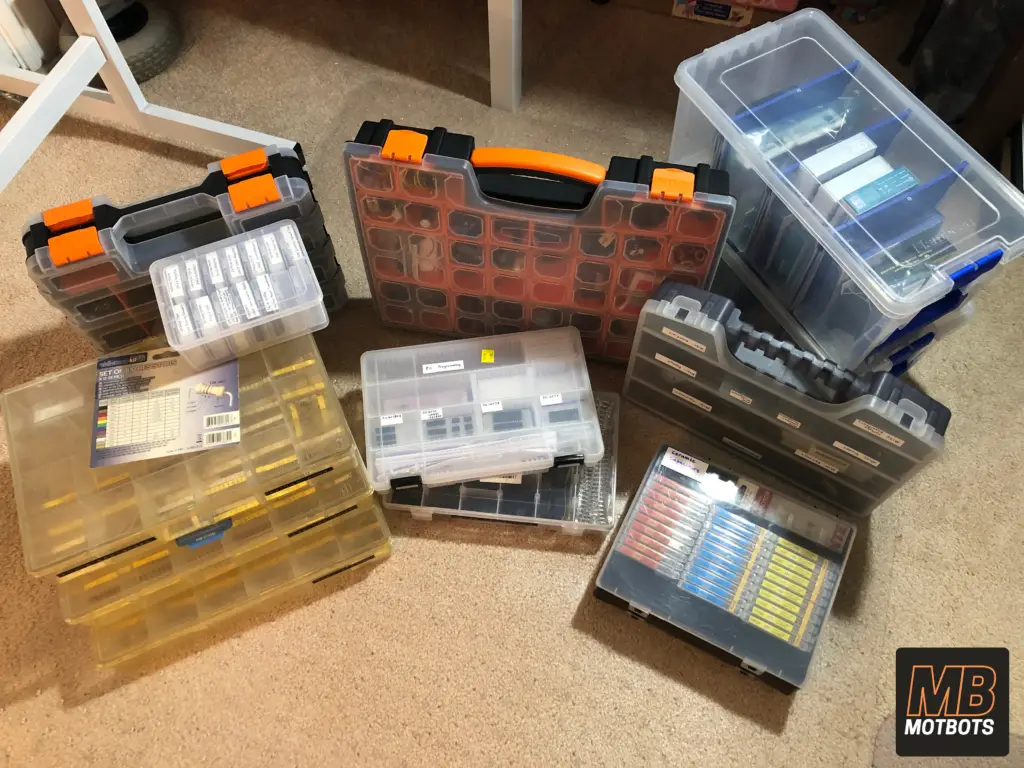
- Digital Multimeter: A digital multimeter (DMM) is another important tool to have around your workstation or desk. The DMM is a tool used often for measuring voltage potential and current within circuits and to test diodes — like LEDs — or to test for continuity within certain components or circuits. Getting a DMM that can also test transistors is an important feature to have. When purchasing a DMM, make sure to get one that has auto-ranging. If you want to know more about DMMs, feel free to check out our post on Digital Multimeters. I have several multimeters, but the one I keep next to me at my desk and use most often is my XL830L multimeter.
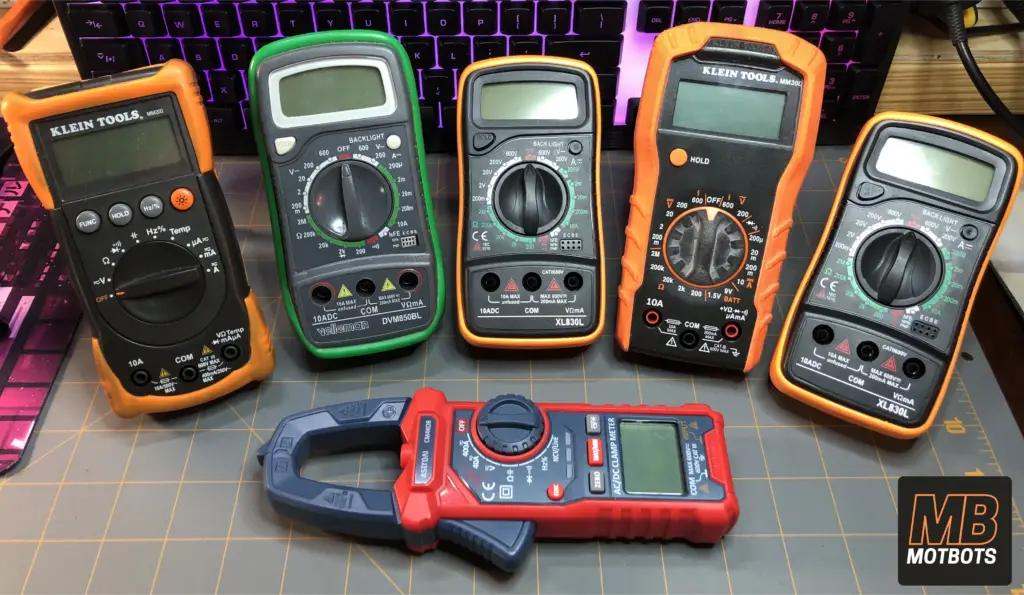
- A Good Reference Book on Electronics: You will inevitably need to refer to something about electronics components, or how-to do a calculation, or refresh your memory on something pertaining to the electronics you work with — so having a good electronics book on-hand to quickly refer to is a great resource to have. I like to keep the books — Electronics Fundamentals: Circuits, Devices & Applications, by Thomas Floyd and David Buchla and Introductory DC/AC Circuits, by Nigel P. Cook — around for my own reference for things from time-to-time. I’m not sure if they’re in print anymore — but if you’re like me, I’m always searching and getting used books anyway — and I’m sure you could find these books used for a good price somewhere like ThriftBooks, if you’re interested. They both contain loads of information that are explained very well. You can also check out our post on Recommended Books on Robotics, where we share recommended books on topics like robotics, electronics and programming — for all skills and ages.
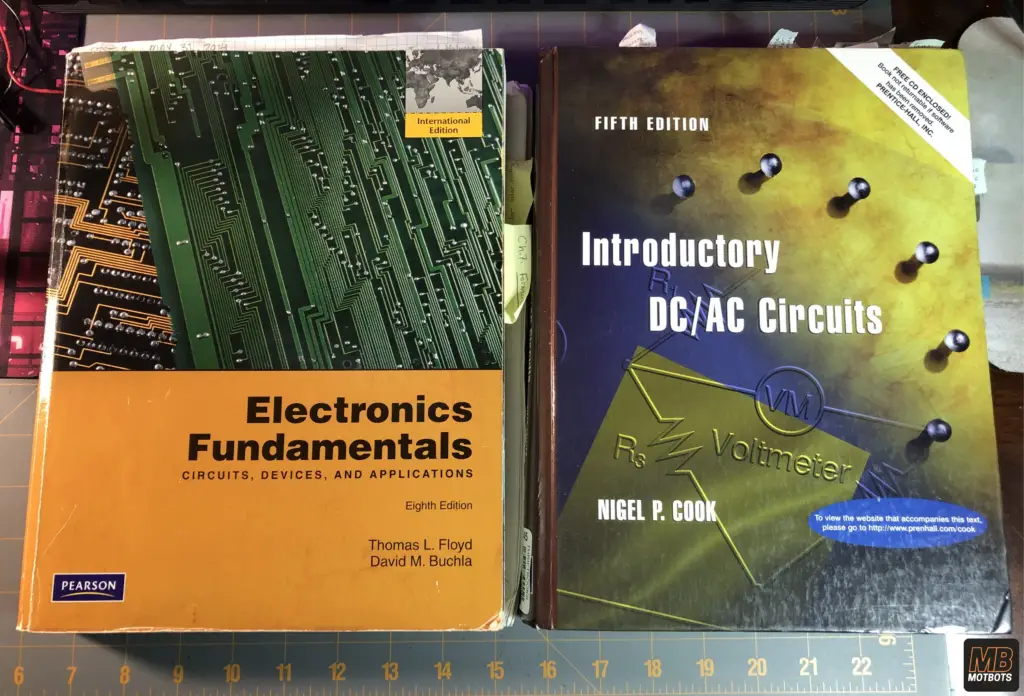
Conclusion
As you progress in your knowledge and skills into the area of robotics, you’ll start to acquire more experience and more tools of the trade. Over time — if you’re serious about robotics — you’ll eventually acquire a whole lab’s worth of tools that you’ll use to make wonderful things. With those tools and your hands you’ll be unstoppable and able to build the robots you’ve dreamed of and pondered over. Until then — stay motivated — keep acquiring tools and knowledge — and keep at it.
